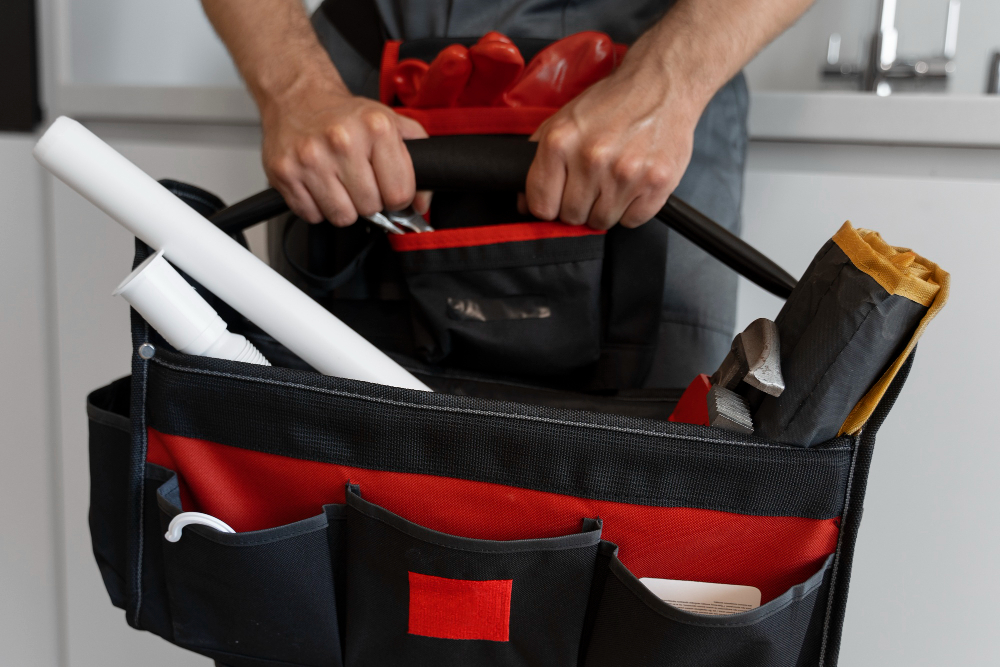IB Psychology: New 2025 Syllabus Blog
Connecting, Collaborating, and Creating for a Smooth and Successful Transition
One of the biggest changes in the new IB Psychology syllabus is the introduction of class practicals - one for each of the four contexts.
These practicals are designed to make research more active, collaborative, and fun, giving students a genuine feel for how psychologists investigate behaviour.
Over the past week, I’ve been developing ready-to-use examples for all four contexts:
Health and Well-being (interviews)
Human Development (observations)
Human Relationships (surveys/questionnaires)
Learning and Cognition (experiments)
Each table includes 10 possible research questions with clear guidance on how to conduct them ethically and safely within a school environment.
They’re realistic, engaging, and perfectly aligned with IB expectations - whether you run them as teacher-led demonstrations or student-led projects.
Bringing Research to Life
These practicals turn abstract research methods into real experiences.
When students interview, observe, survey, or experiment, they begin to see how psychology works beyond the textbook. 
They practise ethical thinking, data collection, and reflection — all essential skills for their internal assessment and for developing as young researchers.
A Ready-to-Use Teacher Resource
You can download and start planning your class practicals straight away here IB Psychology Class Practical Idea.pdf.
They can slot naturally into lessons, support Paper 2 preparation, and deepen understanding of research methods within each context.
Connecting Theory and Practice
These practicals are more than just check-box activities; they’re opportunities for students to connect theory and practice - to do psychology.
By engaging in these exercises, students not only learn about research but experience it first-hand, building the critical thinking and curiosity that define great psychology learners.
Happy experimenting, observing, surveying, and interviewing - and here’s to making the science of psychology a lived experience in your classroom.
Warm wishes,
Thes
Creating a realistic, high-quality Internal Assessment model has been one of my favourite projects this term.
It’s been a chance to bring the IA requirements to life — not just as abstract criteria, but as something students (and teachers!) can actually visualise, adapt, and feel confident about guiding in class.
A Full Proposal, Step by Step
Over the past few weeks, I’ve shared each section of a complete IA model proposal — from the introduction and methodology through to data collection, discussion, and appendices.
The topic I chose, Do humorous images improve memory?, struck the perfect balance between light-hearted and meaningful. 
It’s ethical, easy to run, and full of opportunities to explore key concepts such as emotion, cognition, and experimental design.
The process involved carefully following the IB marking criteria while ensuring the language and explanations stay accessible for 16–18-year-old students.
The result is a detailed, classroom-ready example that teachers can use to illustrate what a strong proposal looks like in practice.
All Model Answers Completed
I’m delighted to share that my full set of IB Psychology Internal Assessment model answers is now complete - covering both the structure and tone students should aim for, and the clarity teachers can use to assess effectively.
If you’d like to read the complete model IA proposal, references and the appendices (including the data collection tools), you can find it here: IB Psychology IA Model Answer.pdf
Supporting Confidence and Creativity
The IA can sometimes feel like one of the more intimidating parts of the course - for teachers and students alike. 
My goal in creating this series was to make it approachable, creative, and, above all, achievable.
With a clear model in hand, teachers can guide with confidence and students can focus on what matters most: designing something that genuinely interests them.
I hope it helps,
Thes
This week I’ve been hard at work developing another full Paper 3, along with model answers.
I’ll be honest — it took time to get the sources and responses just right.
But it was worth the effort. As you know, HL students on the new syllabus have never seen a Paper 3 before, so clear models are vital. 
By giving them a full paper and detailed answers, we can help them understand what is expected and give them the confidence to approach this new exam component.
Download it here: IB Psychology Paper 3 Model Answers.pdf
Why It Matters for Your Classroom
These resources are designed not just for students but for you as teachers.
Paper 3 can feel unfamiliar, and having worked examples on hand makes it easier to guide discussions, plan practice lessons, and set clear expectations.
With these model answers, you’ll have a concrete tool to show students how to analyse sources, integrate concepts, and draw balanced conclusions — all skills the IB will be looking for.
Looking Ahead
With this Paper 3 finished, there’s just one more piece to go. Next up is a model for the Internal Assessment.
Once that’s complete, the full set of models for the new syllabus will be ready to use - a complete package to make our lives as teachers easier and our students’ preparation stronger.
Thes
With the new IB Psychology syllabus, Paper 2 is something students haven’t faced before.
That makes it hard for them to know exactly what will be expected - and difficult for teachers to show what strong answers should look like under exam conditions.
To help with this, I’ve created a new set of model answers for Paper 2, Sections A and B.
What Section A Requires
Section A focuses on research methods used in the class practical.
Students need to describe, explain, compare, or design research methods, using accurate terminology and linking to their own practical work.
For example, describing the aim and procedure of an observation, or explaining how a concept such as measurement applied in their study.
What Section B Requires
Section B is built around a study summary, and students must discuss it with reference to two or more IB concepts such as bias, causality, measurement, perspective, change, or responsibility. 
This means students need to show both detailed knowledge of the study and strong critical engagement with the concepts.
Free Resource
To make all of this clearer, I’ve written model answers that show how students can structure their writing, link methods and concepts, and meet the new criteria.
These are designed to save teachers time and help students feel more confident as they step into a brand-new exam format.
You can access the Paper 2 model answers for Sections A and B here: IB Psychology Paper 2 Model Answers.pdf
I’d love to hear how you use them with your classes - reply and let me know!
Thes
One of the hardest things for IB Psychology students is knowing exactly what examiners want in their answers.
Teachers can explain the markbands and hand out specimen papers, but until students actually see a model answer, it’s hard for them to picture what a top response looks like under timed conditions.
That’s why I’ve been working on a full set of Paper 1 model answers.
I’ve taken the IB’s grading criteria and markschemes, then combined them with my own ideas about how to structure answers in ways that students can easily follow.
Making Expectations Clear
Here’s how I’ve framed them:
Section A: short, 10-minute responses with three clear paragraphs (knowledge, example, explanation).
Section B: scenario-based responses with structured application, always linking context to content.
Section C: extendse responce essays, five+ paragraphs, with signposting and critical analysis leading to a reasoned conclusion.
Why Model Answers Matter
 The goal is to make expectations transparent — so students know exactly how to demonstrate knowledge, apply it, and analyse it under exam conditions.
The goal is to make expectations transparent — so students know exactly how to demonstrate knowledge, apply it, and analyse it under exam conditions.
You can access all the model answers here as a free resource: IB Psychology Paper 1 Model Answers.pdf
I hope this set saves you time and helps your students feel more confident.
Let me know what you think — I’d love to hear how you use them in your classes.
Thes
If you’re anything like me, you’ve been wondering how best to prepare our students for exams on the new IB Psychology syllabus when we only have one specimen paper available.
One paper is just not enough for good practice and confidence building.
Why More Practice Papers Matter
That’s why I’ve created a full set of exam papers with matching mark schemes.
I’ve followed the format of the specimens closely, so you can be confident they reflect how the real exams will look—unless, of course, the IB decide to make changes before the first sitting in 2027.
How These Papers Help
These practice papers are designed to:
Give students more opportunities to rehearse exam-style questions.
Allow us teachers to get familiar with the expected structure and demands of the new assessments.
Save you hours of time in trying to put mock questions together yourself.
Get Your Free Papers
You can find the exam papers and mark schemes linked below, ready for you to use with your classes.
Download the IB Psychology Practice Exam Papers and Mark Schemes here: IB Psychology Thespina Rose QPs and MSs (first assessment 2027).pdf
Let me know how your students get on with them—I’d love to hear feedback as we all navigate these new assessments together.
Thes
Paper 3 is a unique challenge—it’s the HL-only paper that tests students on the extensions: the roles of culture, motivation, and technology in shaping behaviour, as well as data analysis.
At 1 hour 45 minutes, it’s one of the more daunting papers to prepare for, especially as students are expected to apply these broad themes across the four contexts: health and well-being, human development, human relationships, and learning and cognition.
The issue?
There’s no definitive list of what could come up, and in theory, students should be ready to discuss these extensions in any context.
That’s a huge undertaking! 
But here's the silver lining—only question 4 really invites prior knowledge, and even then, the top markband doesn’t require it.
Project-Based Learning to the Rescue
My plan is to simplify things and make learning more engaging: I’ll pair students up and assign each pair one HL extension and one context.
Their task?
A mini research project that explores a specific research question.
Here is some research questions to get your students thinking: Paper 3 Research Question Ideas.pdf
They’ll investigate relevant studies, stats, and concepts, then present their findings to the class. 
Not only will this build their content knowledge—it’ll create a resource we can draw from for that all-important 15-mark question.
Alongside this, I’ll explicitly teach the data and analysis outcomes by breaking down each structured question:
Question 1 (3 marks): Focused on data limitations—students will learn what good data should look like and how to spot its flaws.
Question 2 (6 marks): Involves analysing findings and drawing conclusions—so we’ll practise this skill across different data types.
Question 3 (6 marks): Always qualitative—whether it’s about bias, credibility, or transferability, I’ll plan lessons around these themes using real qualitative examples.
Question 4 (15 marks): The extended response—here’s where those projects shine, but I’ll also teach strategies for using just the sources to craft a strong argument.
Making It Manageable
This approach keeps Paper 3 grounded in practical, collaborative learning, with a clear focus on the skills the exam actually tests.
With a bit of creative planning, we can prepare students confidently without burning ourselves out trying to teach every possible angle.
I’ll be taking a little break next week as I’m heading in for surgery - but I’ll be back soon with a peek at my first Learning and Cognition PsychStunner, which I’ve also been working on behind the scenes.
Take care and speak soon,
Thes
Paper 2, Section B can feel intimidating at first glance.
Unlike Paper 1’s extended response, there’s no choice of question here—it’s compulsory.
Students are presented with a stimulus describing a study (which they may or may not have seen before), followed by four of the six key concepts: bias, change, causality, measurement, perspective, and responsibility. 
Their task?
Discuss the study using at least two of these concepts.
But here’s the good news: success is simply a matter of preparation and structure.
Practise Concept-Based Evaluation Throughout the Course
I believe the real key to success in this section is consistent practice.
Students need to evaluate studies using the six concepts throughout their two-year course—not just at revision time.
That’s why I’ve embedded activities targeting this skill across all my PsychStunners PowerPoint presentations. 
If you’re not planning to use my resources (but honestly, why not? Who doesn’t want visually stunning, exam-focused presentations that save hours of planning?), I strongly encourage you to build similar activities into your teaching.
Simple Structure: My Top Advice for Students
I always share this simple structure with my students and suggest you do the same, until they know it by heart:

And remind students: signpost their paragraphs clearly; use specific study details in their discussion; and link the concepts together where possible.
Here is my student checklist to help with planning, peer feedback, and grading: Paper 2, Section B Answer Checklist.pdf.
It’s an easy tool to help embed this structure until it becomes second nature.
Next week, we’ll dive into Paper 3 and explore how to tackle data analysis and interpretation with confidence.
Until then, happy teaching!
Thes
The new syllabus puts the practical programme at the heart of Paper 2, Section A — and I have to say, I’m really enjoying planning around it.
With four structured questions, this section offers a clear framework to build students' skills and confidence.
This week, I’ve been developing questions and mark schemes to support this, and I’m excited to share some reflections.
Practicals in Practice
Students are assessed on their class practicals, that consisted of one experiment, one interview or focus group, one observation, and one survey or questionnaire.
The first two questions focus on these.
Question 1 (4 marks) asks students to describe parts of a practical.
The specimen paper focuses on aims and procedure, but it's flexible — I think they could also be asked to describe sampling, ethics, results, or conclusions.
This gives us plenty of lesson material!
Question 2 (4 marks) gets students to explain one practical using a concept: bias, causality, change, measurement, perspective or responsibility.
To prepare, I’m having students practise linking each of their practicals to all six concepts — it’s great revision and supports deeper thinking.
Method Matters
Question 3 (6 marks) is a compare and contrast of research methods, and it’s more accessible than it might first seem.
At first, I worried about similarities, but the mark scheme makes it clear: broad similarities like ethical requirements or the need for pilot testing count, and they apply across the board.
Question 4 (6 marks) asks students to design a new practical, using a different method to study the same topic as one of their other practicals.
A heads-up: the specimen paper is incorrect — it should specify which practical they’re redesigning.
Students need a strong grasp of each method and must be drilled in writing specific procedures.
I’ve officially banned “or” and “approximately” in designs!
It’s a positive shift — this structure gives us a solid base for lesson planning and students a clear path to success.
Next week, I’ll be diving into Paper 2, Section B.
Stay tuned!
Thes
This week I’ve been writing questions and mark schemes for Paper 1, Section C of the new IB Psychology assessment—and honestly, it’s been quite a satisfying process.
In this section, students will answer one 15-mark extended response from a choice of two, each tied to a different context. 
The question will ask them to discuss, evaluate, or explore to what extent a topic can be understood through one of the six core concepts (bias change, causation, measurement, perspective or responsibility).
I wouldn’t be surprised to see the odd compare and contrast sneak in too.
Not Just Knowledge—Real Thinking
These questions target AO1 (knowledge and understanding) and AO3 (synthesis and evaluation), and students have roughly 40 minutes to respond.
The real challenge isn’t the writing—it’s the preparation.
There are too many possible combinations for students to memorise responses. 
And actually, I think that’s a good thing.
It encourages us to build real conceptual understanding into every context topic we teach, helping students think critically in the moment.
A Clear Structure for Success
To help students feel confident and focused, I recommend teaching them a five-paragraph structure:
This structure helps students hit the AO1 and AO3 targets without getting lost in the complexity of the task.
Use the Markband to Guide Writing
It’s also vital students know what high-quality work looks like. The top markband offers clear guidance on what’s expected, but it can be tricky for students to apply.
I’ve created a student-friendly checklist that breaks it down in simple terms: Paper 1, Section C Answer Checklist.pdf
Encourage your class to use it regularly for peer and self-assessment—consistency is key.
Next week, I’ll be back to explore Paper 2, Section A.
We’re getting there—step by step!
Thes
One of the most notable changes in the new IB Psychology syllabus is the addition of Paper 1, Section B.
This section includes two compulsory 6-mark questions, each featuring an unseen scenario based on one of the 38 context topics.
Students are asked to explain the scenario using a content topic drawn from the biological, cognitive, or sociocultural approach.
They have around 15 minutes to answer each question.
These questions assess application and analysis—a real test of students’ ability to think critically and connect classroom learning to real-world situations.
How should students structure their answers?
To help students succeed, I recommend a three-paragraph approach:
This structure keeps responses focused and allows for clear demonstration of analysis.
Support for teachers (and students!)
This week, I’ve written a full set of 38 Paper 1, Section B questions and mark schemes for EdQwest—one for each context topic. 
I’ll also be including plenty of examples in my PsychStunners resources, so if you’re looking for classroom-ready materials, I’ve got you covered.
You’ll find a model question and answer here: Paper 1, Section B Model Question and Answer.pdf.
Feel free to use it with your classes or for your own planning.
Next week, I’ll be digging into Paper 1, Section C—so stay tuned!
Until then, take care,
Thes
The new syllabus is here, and with it comes a fresh set of exam questions to get our heads around. I’ve just started crafting questions and markschemes for EdQwest, beginning with the most logical place—Paper 1, Section A.
In this section, students will face two compulsory 4 mark questions, each focused on one of the core approaches: biological, cognitive, or sociocultural.
The command terms will always be ‘describe’ or ‘explain’, and students will have about 10 minutes per question. 
While that may not seem like much time, a clear structure and good exam technique go a long way.
Structure is Everything
My top tip? Support students to aim for three short paragraphs:
Whether the question says "describe" or "explain", don’t overthink it.
Get students to use phrases like "because" or "this is done by…" to show understanding. 
Students won’t lose marks for doing this in a "describe" question, so make sure they don’t hold back.
What Could They Ask?
I’ve put together a list of all possible 4 mark questions based on the syllabus content that you can access here - Paper 1, Section A Questions.pdf.
Model answers are coming too!
In the meantime, here's the grading rubric as a helpful guide.
Mark |
Level descriptor |
0 |
The work does not reach a standard described by the descriptors below. |
1–2 |
|
3–4 |
|
Next time, we’ll be tackling Paper 1, Section B, so stay tuned for more practical tips and resources.
Until then, happy teaching—and here’s to helping our students feel calm and confident with what’s to come!
Warm wishes,
Thes
I’m thrilled to finally share what I’ve been working on behind the scenes — I’m writing the IB Psychology 2027 online textbook for EdQwest!
This project is something I’m truly proud of.
Every chapter aligns closely with the new syllabus and covers all elements of context, content, concepts, practicals, and HL extensions — with all context options included.
Built for the New Syllabus, Designed for Students
Each section blends theoretical knowledge, a hypothetical example, and a relevant research study, all clearly linked to evaluation points using the six concepts.
It’s designed to guide students through what’s needed to tackle every 4, 6, and 15 mark question with confidence in Paper 1.
Making Paper 2 and Paper 3 Easier
The practical chapters unpack interviews, experiments, observations, and surveys.
Each method is broken down clearly, showing students how to design, evaluate, and compare them — making Paper 2 prep simple and focused.
And the HL extension chapters? 
They offer real data and case examples exploring culture, motivation, and technology, while also guiding students through the analysis tools and qualitative research concepts that underpin Paper 3 success.
Powered by the EdQwest Platform
What makes this textbook shine is the EdQwest platform itself — it’s intuitive, engaging, and packed with TOK and CAS links, assessment and study tips, glossaries, and applied activities.
A genuine 21st-century learning experience.
I’m currently polishing the aesthetics and preparing to embed videos and question bank content. 
Once done, this resource will have everything you need to teach (and love) the new syllabus.
And it’s not just for students.
EdQwest also offers an outstanding IB administration platform — built by IB Coordinators, it’s smarter, simpler, and far more cost-effective than separate learning/admin systems.
👉 Check it out at https://www.edqwest.com
I’ll be back soon with more updates on how we can make teaching this new syllabus smoother, saner, and more sustainable — so we all have time and energy for the other things we love.
Have a great week,
Thes
If Paper 3 still feels like a bit of a mystery, you’re not alone — and that’s exactly why I’ve created this week’s PsychStunner focused on Question 2: Analyse the findings and state a conclusion.
With only one specimen paper to go by, it can be hard to give students a real sense of the breadth and style of what they may face.
So I’ve done the hard part for you and created lots of practice questions that make up a big part of my Paper 3 PsychStunners.
24 Research Questions to Keep Things Simple
To make planning easier and more purposeful, I’ve put together a list of 24 possible research questions, each linking one of the three HL extensions (the role of motivation, culture, or technology) with one of the four contexts: health and well-being, human development, human relationships, or learning and cognition.
This structure means every activity, model answer, and scaffolded question is tied directly to syllabus content — and gives students a meaningful context for their Paper 3 skills.
It also makes it easy to mix and match questions for targeted practice or revision.
Going Beyond the Graphs: New Source Types
Question 2 is based on Source 2, and while it could be one of the familiar visual data types from Question 1 (like a bar graph, box plot, or frequency table), I suspect IB may go a little further here.
That’s why this PsychStunner also walks students through how to analyse descriptive statistics, inferential statistics, and correlation coefficients.
Each section is packed with clear examples, model answers, and guided tasks that help students break down what they’re seeing and make strong, accurate conclusions — a skill that’s all the more important when the data type goes beyond a simple graph.
Helping Students Build Real Confidence
What I’ve aimed to do with this PsychStunner is take the guesswork out of teaching Paper 3 Question 2 — and help students build a sense of control over what can feel like a vague and unpredictable part of the course.
And with only one specimen paper to draw from, we need all the quality examples we can get.
Next week, I’ll be turning my attention to Question 3 — the role of ethics in research.
Can’t wait to share what I’ve been working on!
Thes
This week, I began creating the PsychStunner resource pack for Higher Level students, and I’m starting strong with Paper 3.
Since this paper always follows the same four-question format, I’m designing one PsychStunner for each question — and this week’s focus is Question 1: explaining a limitation of the data.
Visual Data in Paper 3: What Students Need to Know
From what we know so far, students will likely be asked to evaluate data shown in a bar chart, box and whisker plot, histogram, line graph, scatterplot, distribution graph or frequency table. 
So, my latest PsychStunner walks students through each of these.
For each graph type, students learn:
Scaffolding Students to Full Marks
To help students feel confident, I’ve included example answers scored 1, 2 and 3 out of 3, so they can see exactly what’s needed to move up a level. 
There’s also a scaffolded task to help them practise building a top-band answer, plus practice questions tied to each data type.
Even better?
Each example is themed around the HL extensions: the role of culture, motivation, or technology on behaviour — always grounded in the four Paper 3 contexts.
Keep an eye out — I’ll be releasing PsychStunners for the first half of IB1 in the coming weeks.
These are designed to lighten your planning load while giving students crystal-clear guidance, engaging visuals, and high-quality practice.
Let me know what you think — and as always, feel free to share how you are planning to prepare your students for Paper 3!
Until next week,
Thes
After a much-needed spring break, things have felt a little calmer this week—just the breathing space I needed to keep moving forward with new resource creation.
Tackling a Content-Rich Topic
I’ve been working on the Health and Well-being option, specifically the Prevention and Treatment topic.
It’s a content-rich one, so I’ve woven in the trickier material—like chemical messengers, neurotransmission, and biological reductionism—right into the topic in a way that makes sense for students and us teachers.
Finding the Right Balance with Obesity
One subtopic I’ve been shaping is the prevention and treatment of obesity.
I’ll admit, I was tempted to dive into Ozempic—it’s so current and relatable—but including it as the main focus risked tipping the whole topic too far into biology.
Instead, I’ve centred the lesson around McLeroy’s Ecological Approach to offer a broader, more holistic framework, with Ozempic included as an alternative treatment example. 
It felt like the right balance for keeping things relevant without overwhelming students (or us!).
Coming Soon: A Calm, Clear PsychStunner
My upcoming PsychStunner on this will do what it says on the tin—break this scientific content right down so you can teach it with calm and clarity, without spending hours trying to untangle it all yourself.
Have a happy and healthy week,
Thes
I’m excited to share that my on-demand workshop for the new IB Psychology syllabus is now complete.
Over the past few weeks, I’ve been creating presentations and filming my commentary to ensure that every key aspect of the syllabus is covered clearly and efficiently.
Clean, Concise and Practical
I know that IB teachers are incredibly busy, so I’ve kept each video concise, focusing on delivering the most important information and practical advice without any unnecessary fluff.
Each session is accompanied by an information sheet summarising key points, making it easy to refer back to essential details.
What's Included?
The workshop includes 15 videos, covering everything needed to start teaching the new syllabus with confidence.
This includes model answers and guidance for every type of exam question, ensuring that both teachers and students are well-prepared. Because it’s on-demand, teachers can go through the materials at their own pace and revisit any sections as needed.
The videos cover the following topics:
Get Started for Just $69
This workshop provides all the information included in the official IB training but in a fraction of the time and at a fraction of the cost. 
Right now, it’s available for just $69.
If you’re looking for a structured, practical, and time-efficient way to prepare for the new syllabus, you can access the workshop here.
Have a super week,
Thes
I know how overwhelming a new syllabus can feel—especially one as ambitious as the updated IB Psychology course.
That’s why I’ve been working hard behind the scenes to create something that will take the stress out of the transition for you.
I’m thrilled to introduce my brand-new on-demand IB Psychology workshop—designed specifically for busy teachers who want to hit the ground running with calm, confidence, and success.
This workshop includes 15 concise, no-fluff videos (each just 5-10 minutes) covering everything you need to fully understand and teach the new syllabus:
✅ Syllabus breakdown: Contexts, content, and concepts
✅ Strategic curriculum planning: Whether you're teaching SL, HL, or a combined class
✅ Assessments demystified: A deep dive into Papers 1, 2, and 3, plus the IA
✅ Ready-to-use resources: A full set of materials to save you time and energy
✅ The IBDP Core: How to seamlessly integrate TOK, EE, and CAS
The best part? It includes all the essential content covered in the official IB workshop—but in a fraction of the time (and for just $69!). 
No unnecessary filler—just the knowledge and tools you need to start strong and teach with confidence.
The workshop launches next week, so stay tuned!
Got questions? Let me know—I’d love to hear from you!
Thes
This week has been all about refining resources, creating engaging content, and finding inspiration in the wider world of Psychology.
From finalising my PsychStunner on Health Problems to developing scripts for EdQwest and attending an incredible student conference at the UN, it’s been a busy but rewarding few days.
Choosing the Best Studies for Health Psychology
Obesity is a widely researched topic, and with so many studies available, my focus this week was on selecting the most relevant and contemporary research for the Health Problems unit in PsychStunners. 
It’s essential that students not only understand key psychological explanations but also engage with current findings that highlight the ongoing work in the field.
The final resource ensures clarity, depth, and direct links to the syllabus, making it easier for teachers to guide their students through this important topic.
Launching Scripts and Notes for EdQwest
Another exciting milestone was completing my first set of scripts and student notes for EdQwest.
These ten scripts will be recorded as videos in which I introduce students to Psychology as a subject, covering foundational topics such as the nature of psychology, the role of theories and studies, and how to evaluate research using concepts, issues, and debates.
I also created guides for all IB Psychology assessments, giving students a strong foundation to approach their exams with confidence. 
Developing these resources has been an incredible experience, and I can’t wait to continue to work on the rest of the syllabus and see how they support both students and teachers.
Inspiration from the UNIS Conference
One of the highlights of the week was chaperoning twelve students to the 49th UNIS Conference at the United Nations headquarters in New York.
This year’s theme, Beyond the AI Algorithm, provided a wealth of thought-provoking discussions that directly connect to IB Psychology’s HL extension on the role of technology.
I was particularly fascinated by the presentation from a 16-year-old student who developed AI technology to diagnose scoliosis after her brother’s diagnosis. 
It was a powerful reminder of how technological advances are shaping health and well-being—an insight I’ll be bringing into future lessons.
It’s been a week of deep learning, resource development, and inspiring moments.
As always, I love seeing the connections between Psychology, education, and real-world applications come to life.
Looking forward to another week of discovery!
Thes
This week, I’ve been diving into the second PsychStunner in the Health and Well-being unit—this one focused on Health Problems.
After some careful consideration, I chose to centre it around obesity rather than drug use.
While drug use is an important issue, it can be contentious in some parts of the world, and I want my PsychStunners to be universally accessible.
My goal is to ensure that any IB Psychology teacher, regardless of their location, student cohort, or cultural setting, can pick up these resources and use them effortlessly, saving time and energy.
Incorporating Emic and Etic Approaches
One of the key aspects I wanted to incorporate was the emic and etic approaches—two sociocultural elements that aren’t explicitly linked to any particular context in the syllabus but are crucial for deeper understanding.
Students will have just completed their first topic, mental health disorders, so they’ve established a solid foundation in psychology.
Now, they will be ready to build upon it with more complex concepts.
I found two excellent contemporary studies on obesity prevalence and the factors driving changes over time and between populations. 
These studies perfectly illustrate the emic and etic approaches in action.
What’s even better is that they were conducted by research teams from Turkey and India, helping me further my goal of exposing students to non-Western, non-white researchers—something that is often overlooked in psychology curricula.
Exciting Plans: A Visit to the UN
Next week, I have the incredible opportunity to visit the UN for the UN International School conference with a group of IB1 students. 
The conference is centred around AI, and I’m looking forward to hearing about contemporary research that could be useful when planning the Role of Technology HL extension.
I’ll be back next week to share insights from the event!
Thes
This week, I got my head down and made serious progress on my second PsychStunner—this time, for the first Health and Well-being topic: Mental Health Disorders.
And I have to say, I’m really excited about how it’s turned out!
Just like the free Introduction to Psychology PsychStunner on my website, these presentations are visually stunning with beautiful graphics and smooth transitions—though I’ve levelled up my PowerPoint skills, so they’re even more engaging and dynamic. 
But beyond aesthetics, my focus has been on streamlining content so teachers can hit the ground running with clear, well-structured lessons.
Why Major Depressive Disorder?
Rather than covering all the disorder options, I made a deliberate choice to focus on MDD.
Other sites might produce resources for every possible disorder, but I believe that in this early stage of the new syllabus, teachers need clarity, not overload.
My goal is to simplify planning, allowing teachers to feel confident in delivering high-quality, exam-ready content.
And if teachers later want to branch out? They can—but for now, let’s make one disorder really strong.
Carefully Selected Content for Maximum Impact
Biological explanation: I went with genetics—specifically the S-HTT gene—since it links perfectly to genetic inheritance content for Paper 1.
Cognitive model: I chose Ellis’s ABC model, which is clearly a model (no IB nitpicking here!).
Cultural factors: A deep dive into Indigenous vs. Western approaches to mental health—ensuring diversity isn’t just an afterthought but a meaningful part of the discussion.
Environmental factors: Brown and Harris’s Vulnerability Model and the fascinating "contagion of depression" study by Rosenquist, Fowler & Christakis.
Interactive, Exam-Focused, and Time-Saving
Across four presentations, I’ve built in:
A Resource to Save You 20+ Hours of Work!
This PsychStunner took me over 20 hours to create, but that’s 20 hours you don’t have to spend! 
Instead, you can deliver engaging, exam-ready lessons without the stress of pulling everything together yourself—leaving you more time for the things (and people) you love.
I’m really proud of how this one has come together—it’s exactly what I envisioned: a visually engaging, interactive, yet totally exam-focused resource that makes life easier for IB Psychology teachers.
Next week, I’ll be back with more updates as I continue preparing for the new syllabus—stay tuned!
Thes
This week, I attended the official IB Category 3 Subject-Specific Seminar online, led by Stuart Jones.
He was excellent—knowledgeable, engaging, and positive.
While the workshop started slowly with introductions and breakout room discussions, it became much more useful when we analysed specimen answers across all papers, reviewed the marks awarded (even when they didn’t always seem logical), and explored justifications for those marks.
Here are my key takeaways:
Studies Are Not Essential for Full Marks
The biggest revelation was that studies are not required to achieve full marks in any answer.
Instead, students can use real or hypothetical examples as long as they are well-explained and fully linked to psychological concepts.
However, as Stuart Jones noted, "there is still a major place for studies."
Teaching without them would be difficult, and for extended responses, studies offer a strong foundation for detailed, high-mark answers. 
I plan to teach one study per topic to maintain balance, encourage interactive lessons, and ensure students are well-prepared.
Paper 1 – Section B Must Apply to the Context
The teacher support material (which isn't available on MyIB yet) clearly states that if students do not apply their knowledge to the context in Section B, they will score zero.
This seems harsh but is an important detail for both teachers and students to keep in mind.
Paper 2 – Practical Investigations
A useful discussion arose about class practicals.
The syllabus suggests that teachers can lead the practicals themselves, particularly for experiments, which could simplify the process while ensuring students still gain hands-on experience.
Paper 3 – Lines of Enquiry
The syllabus suggests 45 hours for teaching the connections between the HL extensions and the four contexts.
This seems excessive, especially given that the only place this knowledge is assessed is in Question 4, where it’s not even explicitly required in the rubric.
I plan to spend around 8 hours on this, having students complete a project on one of the HL extensions and present their findings to the class.
IA Timing – Earlier Than Expected
Initially, I thought the IA should be done at the end of the course, after covering all practicals.
However, I now plan to teach it at the end of Year 1, after covering the interview on health and well-being and the experiment on learning and cognition.
This means students will have to base their IA on one of these two research methods, streamlining the process.
New Curriculum Plans
In light of the information I gained in the subject specific seminar, I updated my curriculum plans. You can find them here: IB Psychology Curriculum Plans Version 2.pdf
My Upcoming On-Demand Workshop
While the course was informative, there was a lot of unnecessary discussion—long breakout sessions that didn’t add much value.
If you’re like me, you want short, concise training that gives you everything you need in the least amount of time.
That’s why I’m creating an on-demand workshop over spring break!
It will be a fraction of the cost of the official IB workshop and packed with all the essential information to help you transition smoothly into the new syllabus—without the fluff. 
If you’re not due for official training but still want to be fully prepared, keep an eye out for my course in the coming weeks!
Thes
The new IB Psychology syllabus is starting to take shape, and this week, I took a deep dive into everything we currently know about assessments. 
While the transition brings some uncertainties, it also offers clarity on how we can best prepare our students for success.
Breaking Down the New Assessments
I meticulously cross-referenced all available information on MyIB, including the syllabus details, assessment guidelines, and specimen papers.
From this, I put together a comprehensive guide to assessments—a resource that outlines:
This process took hours, but it was incredibly rewarding.
I now have a much clearer understanding of what’s expected, which will directly shape how I guide my students through their exam preparation.
IB Psychology Assessment Guide.pdf
Surprises and Next Steps
A couple of things stood out during my deep dive.
Firstly, there seems to be no explicit requirement for studies in some assessment questions.
While this is unexpected, I’m considering whether I’ll still teach one for each topic—it’s something I’ll investigate further.
Secondly, HL students will need theories and studies for the HL extensions, as they can use these in Paper 3, question 4.
This means I’ll be tweaking my curriculum plan to ensure they’re fully equipped for this part of the exam.
Looking ahead, I’ll be attending the official IB Category 3 subject seminar this weekend with Stuart Jones, who led the team behind the new syllabus.
I’m excited to gain more insights, clear up uncertainties, and, of course, share any new revelations with you!
As always, I’d love to hear your thoughts—are you finding any surprises in the new assessment structure? 
Let’s navigate this transition together.
Thes
This week was my half-term break, and I took full advantage of it—relaxing on a Caribbean cruise, soaking up the sun, and recharging before the busy weeks ahead. 
But, of course, I couldn’t completely switch off from IB Psychology!
I used some of my downtime to create a new student-friendly presentation and notes that break the new syllabus down into clear, accessible language.
This Week's Freebie
They cover:
These resources have now been added to the free Introduction to Psychology PsychStunner—helping students (and teachers!) navigate the syllabus with ease.
Get them here.
Looking Forward to Week Three
Next week, it’s back to business!
My focus will be on creating a detailed guide to the assessments and command terms, ensuring students are well-prepared for what’s ahead.
Let’s keep making this transition smooth, stress-free, and successful—together!
Thes
The new IB Psychology syllabus was officially released on Tuesday, and I was impressed to see it go live on MyIB as planned.
The section was well-organised and thorough, making it easy to access all necessary documents.
However, my initial read-through left my heart racing—it seemed like a lot, and at first glance, the structure was quite confusing.
Hoping for some clarity, I attended the free Kognity webinar, but unfortunately, it didn’t provide any new insights beyond what I had already covered in my YouTube videos and articles.
So, my next step was to take a slow, detailed read through the syllabus.
This time, things made more sense, but I was puzzled by the way approaches content was selectively included within the context learning objectives.
Mapping the Syllabus
This led me to my first major task—mapping the syllabus content. 
I meticulously cross-referenced the lists of content and context learning objectives, identifying overlaps, placing missing content, and coming up with solutions for gaps.
The result? A clear, structured document that simplifies the syllabus into a linear, manageable sequence for teaching each of the three papers and the internal assessment.
My mapping document is linked here - IB Psychology Syllabus Map.pdf - this should save you hours of work and give you a strong starting point for planning.
The Challenge of SL Content
Another concern that quickly became apparent was the sheer volume of content, especially for Standard Level students.
SL students are expected to learn everything for Paper 1 (content, concepts, and contexts) and Paper 2 (class practicals and evaluation of an unseen study).
While they don’t take Paper 3, the syllabus still states they should be taught research methods, research considerations, and data analysis and interpretation.
This is an enormous amount to cover in just 150 hours.
On the other hand, the Higher Level content seems well-structured, with 45 hours dedicated to culture, motivation, and technology’s role in shaping behaviour.
However, given the Paper 3 specimen papers, it seems unnecessary to teach specific studies for these areas—these are provided in the exam’s resource booklet, making it difficult to predict which ones will appear.
To help address timing concerns, I created structured curriculum plans, following the official IB guidelines and an alternative approach that I will likely use to maximise student success.
My curriculum plans are linked here - IB Psychology Curriculum Plans.pdf - feel free to use or adapt them for your own teaching.
Reviewing the New Syllabus on YouTube
Despite a few concerns, I’ve put in the work to find solutions, and overall, there are some great improvements in the new syllabus.
This week, I created a YouTube video reviewing the syllabus, discussing both the challenges and the positives. 
The class practicals, reduced emphasis on memorisation, shorter extended response questions, and the balance of structure and flexibility in the contexts are all exciting changes.
Watch the video here to get my full breakdown of the new syllabus.
Moving Forward Together
The IB Psychology community is facing a big transition, but we don’t have to do it alone.
By sharing resources, ideas, and strategies, we can ensure that this shift is smooth and successful—without sacrificing our work-life balance.
Collaboration is key, and I’m here to support you every step of the way.
Next week, I’ll be expanding my Introduction to Psychology PsychStunners (link here) with a student-friendly presentation outlining the syllabus and curriculum plans in an engaging and accessible way.
Let’s connect, collaborate, and make this transition stress-free and successful together!
Thes



Add your email to the mailing list to get the latest news, ideas and resources.